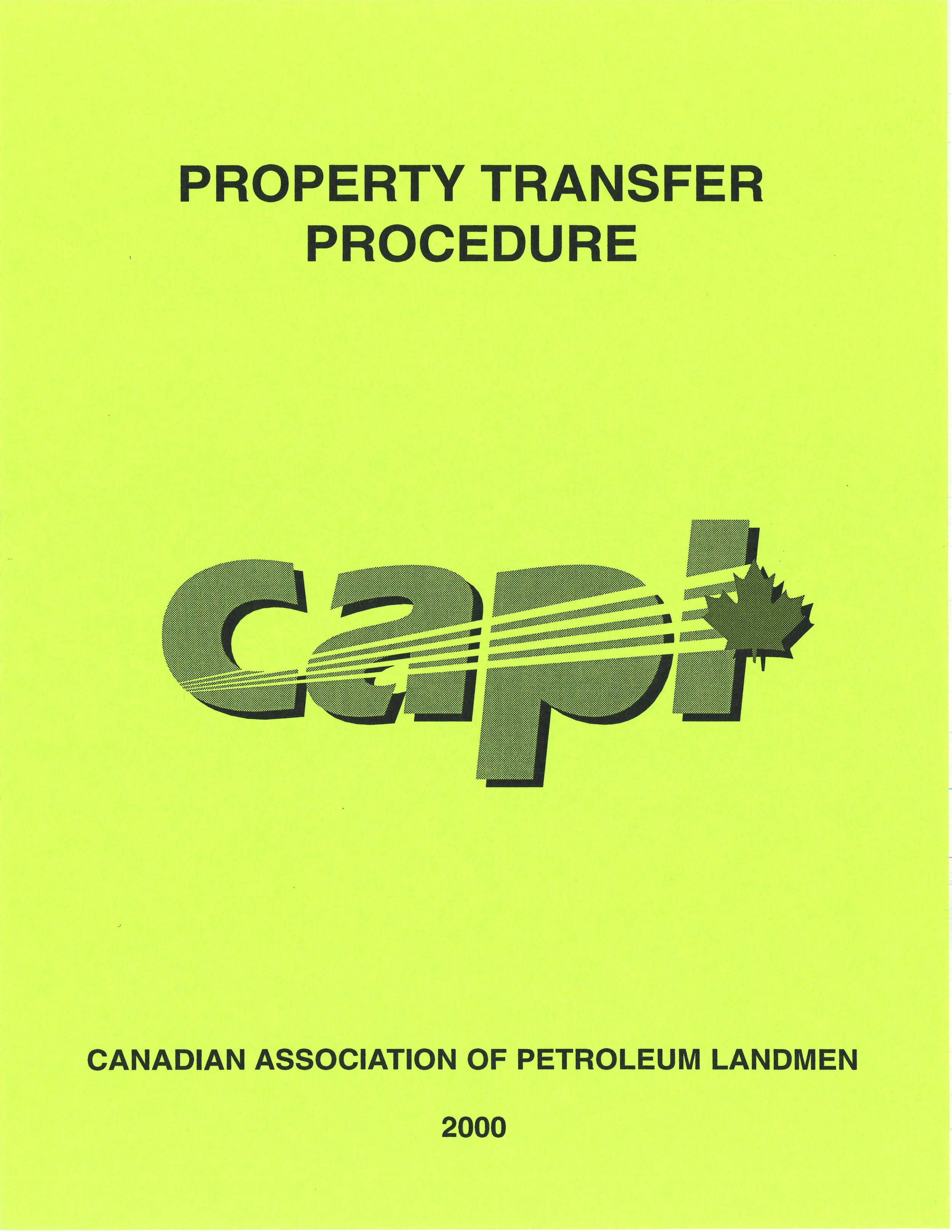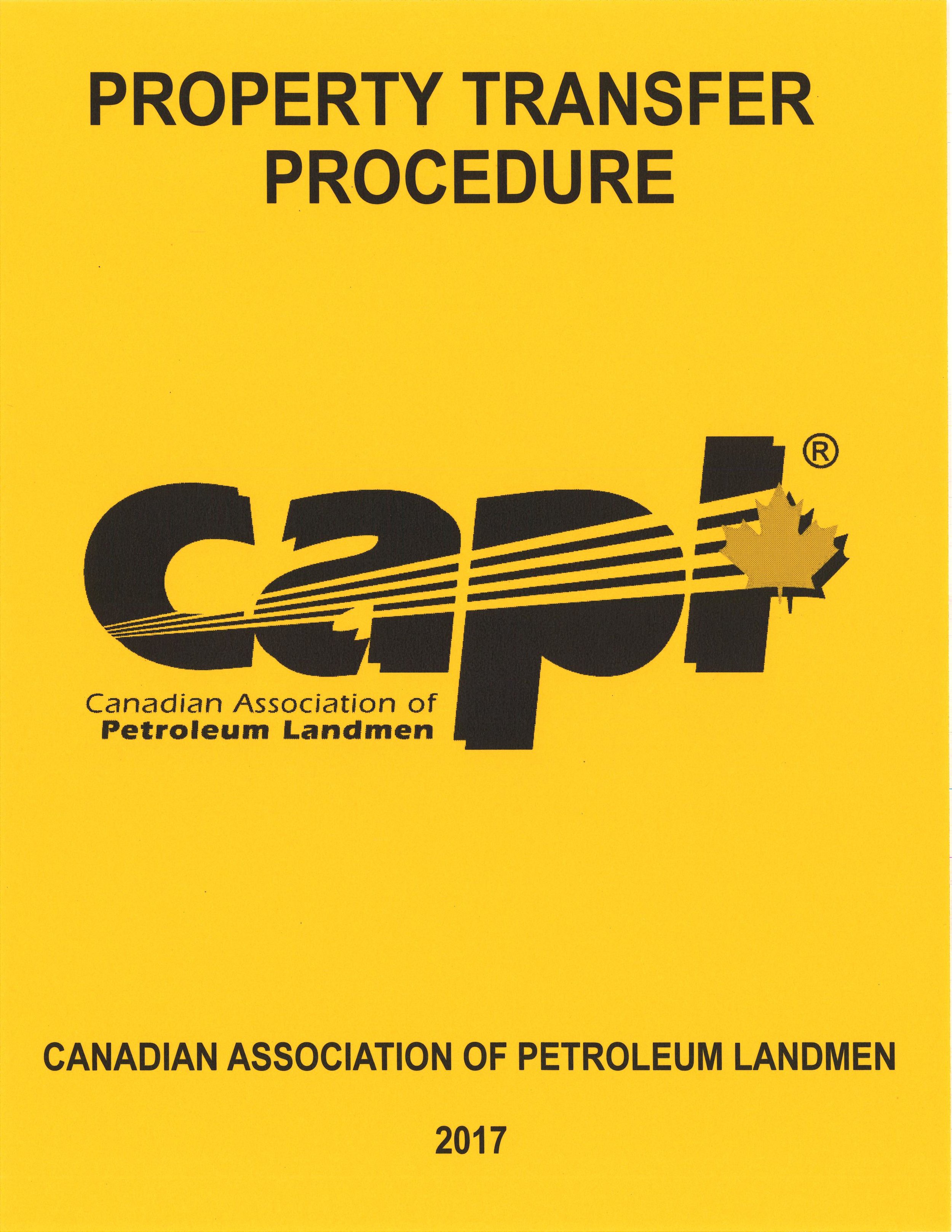2017 CAPL Property Transfer Procedure
Fun Fact: Those of us most closely involved with the 2000 version of the document had been operating on the assumption that the document was not often used by industry because of the absence of questions we received and the fact that it was not being used by larger companies. We discovered when meeting with some EPAC land representatives in late 2015 on a different topic that the 2000 CAPL Property Transfer Procedure was, in fact, being used regularly without significant issues by many smaller companies. This was the impetus to the decision to initiate the update process that resulted in the 2017 document.
Impact of Alberta Energy Regulator Bulletin 2017-13: There is one critical aspect of the PTP of which users must be aware. It relates to the transfer of licences for operated properties in Alberta in the context of the current requirements of AER Bulletin 2017-13. That Bulletin introduced major changes to the process of transferring Alberta licences in a way that has a significant impact on the manner in which industry’s A&D transactions are conducted.
In the absence of any change to the AER’s process, cautious parties will often respond to the AER’s approval requirement by choosing to close a transaction involving operated Alberta assets in escrow. This is because the Vendor and Purchaser will not have sufficient certainty to know if the transfers of regulatory licences associated with their transaction will be approved by the AER in due course. Including a customized closing in escrow step would see the parties structuring their transactions so that some or all of the transaction would be undone if the required AER approvals are not ultimately obtained, with any associated return of funds.
We chose not to modify the provisions of the PTP to address that Bulletin.
If the ability to effect a transfer of any licence for any of the Assets is in question (as under Bulletin 2017-13), the onus is on the parties to add custom content in their Head Agreement to address their particular needs. As noted several times in the PTP annotations, in industry presentations on the PTP, in Negotiator articles on the PTP and at the CAPL course on the document, this might be done, for example, by including additional definitions, a Clause that relates to the specific handling required for their circumstances, the possible inclusion of a Closing in escrow mechanism and the inclusion of additional conditions to Closing.
There were two reasons for this approach. The first was the belief that the PTP should not attempt to predict or prescribe the handling of an important emerging issue that should be assessed and handled by the parties and their applicable business and legal advisors on a case by case basis. The second was that the fluidity of the Regulations on this area over time and across jurisdictions was such that any more specific handling of the issue in the PTP based on a snapshot in time would potentially create unintended consequences for the parties over time if they chose to rely on the PTP handling without checking the specific regulatory requirements at the time.
It is important to recall, though, that simplifying the review of the other procedural aspects of the overall transaction through use of the PTP facilitates a more focused examination of this important issue by the parties’ representatives relative to what would be the case without the PTP.
Link to CAPL Website: Here is the hyperlink to the CAPL website content respecting the 2017 CAPL Property Transfer Procedure and the prior version of the document: https://landman.ca/downloads/bizforms. The CAPL website includes materials in addition to those provided here, including the annotated version of the document, an unannotated version of the document, a downloadable election sheet for the document and downloadable versions of the Case Study examples included as Addendums III-VII of the annotated PTP.
Matrix of Changes: Here is a 39-page matrix of changes between the 2017 and 2000 documents. It provides a context for every material change in the document and the rationale for each change. It offers a compelling case for change.
Overview Presentation: Here is a PDF of the 2018 CAPL Conference presentation that provides context on the 2017 document and highlights the major changes between the 2017 and 2000 documents.
2018 CAPL Conference Presentation
CAPL Negotiator Articles: Here is a PDF of a series of articles published in the CAPL Negotiator over time to facilitate industry’s transition to the 2017 document by outlining the major differences relative to the 2000 document. Those articles were updated as required to reflect the handling in the final version of the PTP. Insofar as others wrote those articles, their permission to include the articles in this compilation was obtained.


